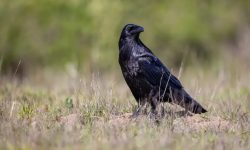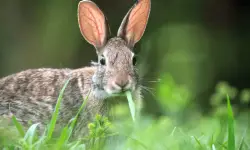Foxes are some of the most intelligent and adaptable predators in the animal kingdom. With their sharp eyes, cunning behavior, and unmatched agility, they can thrive in nearly every environment—from dense forests and snowy tundras to bustling suburban neighborhoods. But one question often sparks curiosity among wildlife enthusiasts and pet lovers alike: What do foxes eat?
The diet of a fox is as versatile as the animal itself. Foxes are omnivores, meaning they eat both animal and plant matter, adapting their food choices to whatever is available. This flexibility allows them to survive in deserts, mountains, and even city streets. Their sharp teeth, keen hearing, and strong sense of smell make them efficient hunters and scavengers.
In this detailed guide, we’ll explore 18 foods foxes love the most, explaining what they eat in the wild, how they hunt, and how their diet helps them stay strong and wild. Whether you’re studying wildlife behavior or simply curious about nature’s cleverest canines, this article will give you a deeper look into their fascinating eating habits.
Understanding the Fox Diet

Foxes are opportunistic feeders. Unlike specialized predators such as wolves or cheetahs, they don’t rely on one type of food. Instead, they eat what’s most abundant and easiest to catch. Their diet shifts with the seasons—small mammals and insects dominate in spring and summer, while fruits, berries, and carrion become staples in fall and winter.
There are many fox species worldwide—red foxes, arctic foxes, fennec foxes, and gray foxes, among others. Although their environments differ, their dietary patterns share key similarities. Each species adapts its feeding to its local ecosystem, ensuring survival even in extreme conditions.
Let’s explore the 18 foods that keep these remarkable animals healthy, energetic, and perfectly in tune with their environment.
18 Foods That Keep Foxes Strong and Wild
1. Small Mammals
The primary diet of most foxes consists of small mammals such as mice, voles, rabbits, and shrews. These creatures provide protein, fat, and essential nutrients that fuel foxes’ high-energy lifestyles.
Red foxes, for example, often stalk and pounce on rodents in tall grass using their exceptional hearing to pinpoint movement. This hunting method is both efficient and instinctive, ensuring a steady food supply year-round.
2. Rabbits and Hares
Rabbits and hares are another favorite prey, especially in rural and woodland areas. They’re larger and provide more meat than smaller rodents. Foxes usually hunt them at dawn or dusk, relying on stealth and patience to ambush.
This source of lean protein supports muscle development and growth, helping foxes stay strong and agile. During leaner months, foxes may bury leftover rabbit meat to eat later—a behavior known as caching.
3. Birds and Their Eggs
Foxes are skilled opportunists and often raid ground-nesting birds for both adults and eggs. They feed on ducks, pheasants, and small songbirds, depending on what’s available.
Eggs are especially valuable because they’re nutrient-dense and easy to carry. A single nest can provide multiple meals, and foxes will store excess eggs for future consumption.
4. Insects
Insects play a huge role in a fox’s diet, especially during summer. Beetles, grasshoppers, crickets, caterpillars, and grubs are all common meals. Insects are easy to find and rich in protein, making them a perfect food source when larger prey is scarce.
For young foxes (kits), insects are a safe and nutritious introduction to solid food. Foxes dig or pounce on the ground to catch them, showcasing their playful yet effective hunting instincts.
5. Frogs and Amphibians
Foxes living near wetlands or streams frequently eat frogs and other amphibians. These animals provide moisture and protein, helping foxes stay hydrated in warmer months.
Though amphibians aren’t as calorie-dense as mammals, they’re easy prey during breeding seasons when frogs are plentiful. Arctic and desert foxes may skip this item entirely due to lack of habitat, but red and gray foxes thrive on it.
6. Fish
Foxes are surprisingly good fishers. They catch small fish in shallow water or scavenge dead ones near rivers and lakes. Some have even been observed stealing fish left behind by birds like herons or eagles.
Fish add healthy omega-3 fatty acids to their diet, promoting shiny fur and brain health. Arctic foxes often rely on fish scraps left from polar bear kills, showing how clever and opportunistic they can be.
7. Reptiles
Small reptiles like lizards and snakes are occasionally on a fox’s menu. While they’re not a major food source, foxes will hunt them in warmer regions when available.
These meals add protein and variety to their omnivorous diet. Fennec foxes in desert regions, for example, rely on lizards as a key source of hydration and sustenance during dry months.
8. Berries
Foxes are fond of berries, particularly in late summer and fall when fruits ripen. They eat blueberries, blackberries, raspberries, and cranberries straight from the bush.
Berries are rich in antioxidants, vitamins, and hydration. In northern regions, where animal prey becomes harder to find during the colder months, berries help foxes maintain energy and nutrition.
9. Apples and Other Fruits
Apples, pears, and persimmons are favorites for foxes living near orchards or rural areas. These fruits are sweet, abundant, and easy to digest.
They provide natural sugars for quick energy and moisture to prevent dehydration. Foxes have even been known to climb low branches or stand on hind legs to reach hanging fruit—a testament to their intelligence and adaptability.
10. Carrion
Carrion, or animal carcasses, is an essential part of the fox diet, particularly during winter. Foxes are skilled scavengers and will feed on dead deer, livestock, or roadkill when hunting becomes difficult.
This opportunistic feeding behavior helps clean the environment by recycling organic material. It also demonstrates how foxes make the most of every survival opportunity.
11. Earthworms
Earthworms are a common part of the diet for foxes in temperate climates. They’re easy to find after rainfall and are rich in protein and minerals.
Gray foxes are especially known for digging in moist soil to find worms and grubs. Though small, these creatures provide consistent nutrition throughout the spring and fall seasons.
12. Nuts and Seeds
Foxes eat various nuts and seeds, especially in autumn when preparing for the colder months. They collect and bury acorns, chestnuts, and other seeds to consume later, much like squirrels do.
These foods are calorie-dense and provide long-lasting energy, crucial during times when meat sources are limited. The fats from nuts also help foxes maintain warm body temperatures through winter.
13. Vegetables
While not a primary food, foxes occasionally eat vegetables such as corn, carrots, and potatoes. They often raid gardens or farms for easy snacks.
Vegetables provide fiber and hydration and help balance their diet when other food sources decline. This behavior also shows how comfortable foxes have become living near human settlements.
14. Crustaceans
In coastal areas, foxes feed on crabs, crayfish, and other crustaceans found along shorelines. These are protein-rich and relatively easy to catch during low tide.
For island-dwelling foxes, like those found on the Channel Islands in California, crustaceans are a significant dietary component. They also scavenge shells and bones for minerals.
15. Poultry and Livestock (Occasionally)
In rural areas, foxes sometimes prey on chickens or small livestock when natural food is scarce. This behavior often leads to human-wildlife conflicts, though it’s rare when other prey is available.
Foxes are nocturnal and stealthy, making nighttime raids on chicken coops particularly tempting. Proper fencing and lighting can help deter them without harming wildlife.
16. Grains and Corn
Grains, particularly corn, are eaten by foxes when they’re easily accessible. They’ll nibble on leftover crops, feed from bird tables, or forage in fields after harvest.
Though not their favorite, grains supply quick energy and are particularly useful in cold climates or when food sources are scarce.
17. Pet Food and Human Waste
Foxes living in cities have adapted to urban life remarkably well. They scavenge pet food left outdoors, garbage bins, and compost piles.
While this shows their resourcefulness, it can lead to dependency or health issues if they eat processed foods too often. Encouraging secure waste disposal helps maintain their natural feeding behaviors.
18. Beetles and Larvae
During warmer months, beetles, larvae, and grubs are a consistent protein source. Foxes dig through soil and fallen logs to find them, using their sharp claws and sensitive noses.
For juvenile foxes, these small insects are a perfect training ground for hunting skills, helping them learn to stalk, pounce, and dig before moving on to larger prey.
Seasonal Diet Changes
Fox diets shift dramatically with the seasons to match available resources:
- Spring: A bounty of insects, small mammals, and fresh vegetation. Foxes hunt actively to regain strength after winter.
- Summer: Rodents, birds, and fruits dominate. Abundant prey helps adults feed their growing kits.
- Autumn: A mix of nuts, berries, and surplus kills are stored for winter. High-calorie foods help build fat reserves.
- Winter: Carrion, small mammals, and scavenged food sustain foxes through harsh conditions. Their metabolism slows slightly to conserve energy.
Nutritional Balance and Health
A balanced diet keeps foxes lean, alert, and muscular.
- Protein from meat and insects supports muscle strength and reproduction.
- Fats from nuts and carrion provide energy and insulation in cold weather.
- Carbohydrates from fruits and grains offer quick energy bursts for hunting.
- Vitamins and minerals from vegetation boost immunity and coat health.
Foxes instinctively balance these nutrients throughout the year, adjusting their diet for survival and efficiency.
How Foxes Hunt and Forage
Foxes use keen senses and clever strategies to find food. Their large ears detect underground movement, while their light, padded feet allow silent stalking. They often perform a signature high leap—known as “mousing”—to pounce precisely on hidden prey.
At night, foxes cover vast territories searching for food, marking trails with scent to remember productive areas. They also bury excess food in shallow caches to retrieve later—a behavior that helps them endure lean seasons.
The Role of Foxes in Ecosystems
Foxes are essential to ecological balance. By controlling rodent populations and scavenging carcasses, they help reduce disease spread and maintain healthy ecosystems. Their feeding habits support biodiversity by preventing overpopulation of smaller species and promoting plant regrowth.
Even in cities, foxes play a role as natural waste managers, consuming leftover food and deterring pest infestations. Their adaptability makes them one of nature’s most efficient survivors.
FAQs About Fox Diets
What do foxes eat the most?
Small mammals like mice and rabbits are their main food sources, providing essential protein and fat.
Do foxes eat fruit?
Yes. Foxes enjoy berries, apples, and other fruits, especially during summer and autumn.
Do foxes eat cats or dogs?
It’s extremely rare. Foxes typically avoid confrontation with pets and prefer smaller, easier prey.
What do foxes eat in winter?
They rely on rodents, carrion, and cached food supplies when prey becomes scarce.
Are foxes scavengers or hunters?
Both. They’re skilled hunters but will scavenge readily if an easy meal presents itself.
Can foxes survive on human food?
They can, but it’s not ideal. Processed foods lack the nutrients they need and can harm their health.
Conclusion
Foxes are the ultimate opportunists of the wild. From rodents and insects to fruits and nuts, their diet reflects intelligence, flexibility, and survival instinct. This diverse menu allows them to thrive in nearly any environment—urban or wilderness, desert or tundra.
By understanding what foxes eat, we gain insight into their resilience and importance in the ecosystem. They’re not just cunning hunters; they’re natural recyclers, pest controllers, and indicators of ecological health.
The next time you catch a glimpse of a fox trotting gracefully under the moonlight, remember—it’s not just searching for food; it’s carrying on a timeless ritual of adaptation and survival. Their varied diet keeps them strong, their instincts sharp, and their wild spirit alive in every corner of the world.






